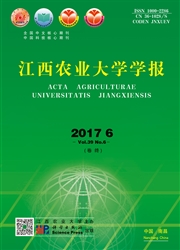

 中文摘要:
中文摘要:
本研究旨在分析甲砜霉素在鲤鱼和鲫鱼体内不同组织中的蓄积规律.按照30 mg/kg的给药量对鲤鱼和鲫鱼连续口灌给药3d,停药24h后采样.外标法定量,采用高效液相色谱-串联质谱法(HPLC-MS/MS)检测鲤鲫鱼各组织中甲砜霉素的蓄积量.结果显示:甲砜霉素在0.1~200 ng/mL范围内有良好的线性关系,相关系数为0.998 7,回收率82.37%~107.92%.甲砜霉素在鲤鲫鱼各种组织中呈现相同的蓄积趋势,其中以血浆和肾脏中最高,鳃及脾脏中最低,鳔、肝、肠、胆汁、性腺、肌肉和皮中均有药物蓄积,且在鲫鱼卵巢药物蓄积量略大于精巢.甲砜霉素应用于鲤鲫鱼病害防治时应注意其对肾脏及性腺的影响,避免造成机体或生理机能损伤.
 英文摘要:
英文摘要:
The accumulation rule of thiamphenico (TAP) in different tissues of common carp (Cyprinus carpio) and crucian carp (Carassius auratus) were studied.After oral administration of TAP with a dosage of 30 mg/kg body weight per day for 3 days,the samples were collected at 24 h after drug withdrawal.A quantitative analysis was performed with external standard method and TAP concentrations in tissues were analyzed by high performance liquid chromatography-tandem mass spectrometry (HPLC-MS/MS).The results indicated that the TAP had a good linear relationship (R2 =0.998 7) in the range of 0.1 ng/mL to 200 ng/mL concentration and the recovery rate varied from 82.37% to 107.92%.TAP showed the same accumulation trend in various tissues of fish,among which,it accumulated the highest in blood plasma and kidney and the lowest in gill and spleen.TAP was also found to accumulate in swim bladder,liver,intestine,bile,gonad,muscle and skin.In addition,the accumulation content of TAP was a little higher in ovary than in testis.Therefore,more attention should be paid to the effects of TAP on kidney and gonad to avoid the damage to body or physiological function when TAP was applied to the prevention and control of bacterial diseases in common carp and crucian carp.
 同期刊论文项目
同期刊论文项目
 同项目期刊论文
同项目期刊论文
 期刊信息
期刊信息
